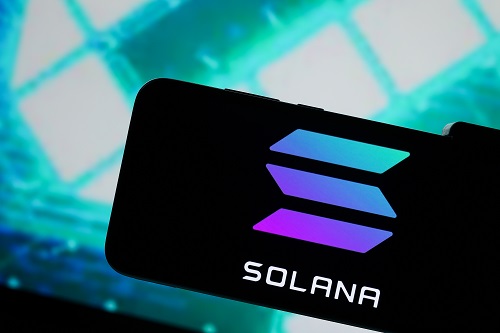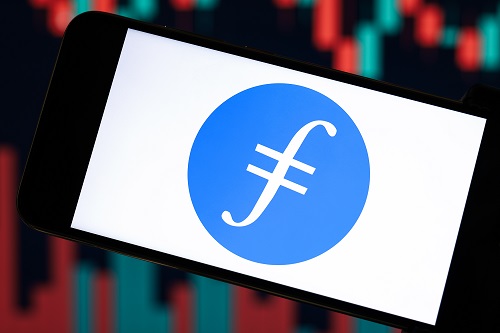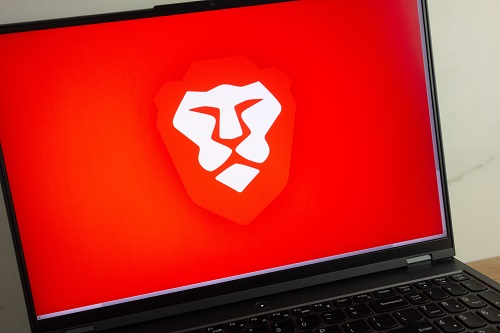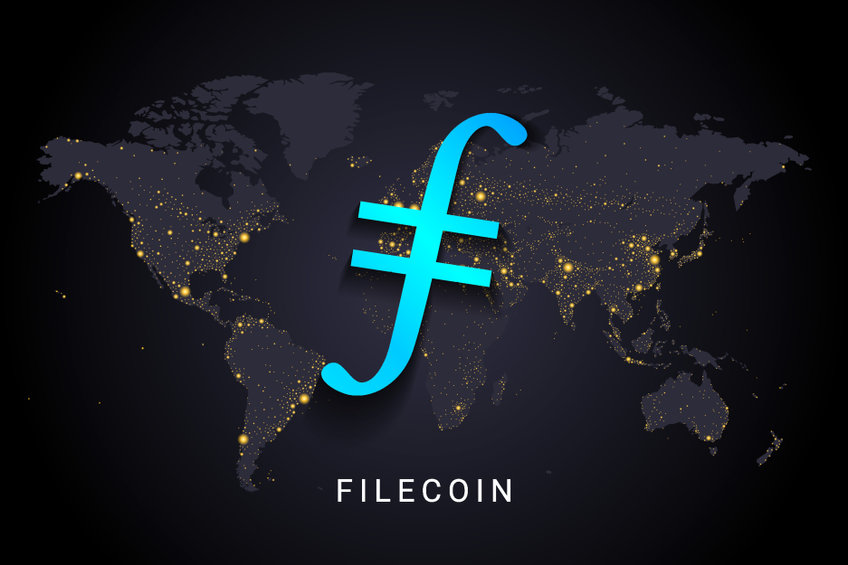How & Where to Buy Filecoin (FIL) - Beginner's Guide
Filecoin is a blockchain-based decentralized storage network for data where users earn crypto rewards for hosting data. Whereas traditional cloud storage runs on central servers run by private companies, Filecoin uses a decentralised network of computers that anyone can join in order to earn Filecoin (FIL).
This article will tell you about the dynamics of Filecoin in more detail and guide you on where and how to buy Filecoin.
How to Buy Filecoin
The easiest way to buy Filecoin is to purchase it online from a crypto exchange. Exchanges make it easy to buy and sell Filecoin and other cryptocurrencies directly from your smartphone, tablet or computer. Check out our recommended platforms below and follow the steps to safely buy Filecoin.
1. Choose a platform
The first thing you’ll have to do to set up a crypto account is to pick a platform that is secure, easy to use, and charges low transaction fees. We recommend you choose from one of the trusted platforms listed below.
2. Create and fund your account
Create an account by filling out your details and uploading your driving license or passport to verify your identity. After this, you can make a fiat deposit to your account using payment methods such as bank transfer, Mastercard, Visa, and PayPal.
3. Buy Filecoin
After this, you’ll be able to buy Filecoin by looking for it in the search bar of your chosen platform. You will need to buy Filecoin using your local currency; if you are a US-based user, for example, select the FIL/USD trading pair.
Where to Buy Filecoin?
Here are some recommended exchanges and brokerages where you can purchase Filecoin from. If it’s your first time signing up to a trading platform, carefully consider what you want to get out of using an exchange or brokerage and find one that matches your requirements.
Ways to Invest in Filecoin
There are a number of ways through which you can invest in Filecoin. You should base your investment strategy on your financial position and ask yourself whether you’re looking to see potential returns in the short-term or hold out for larger gains in the long term.
Buy and hold Filecoin
Buying and holding on to Filecoin is the most popular strategy among investors because it allows you to accumulate profits in the long term, and is a relatively risk-free approach compared to trading FIL.
Best Filecoin wallets
You can either store your Filecoin in a web crypto wallet provided by your preferred crypto exchanges or platforms or take self-custody by using private software wallets or trusted hardware wallets like Trezor, BitBox, and Ledger.
Filecoin recommends storing your FIL in web wallets like Lotus, Gilf, and Filfox that can be linked to physical wallets like Ledger.
Trade Filecoin
Rather than holding on to their FIL for the long-term, some investors choose to trade their coins by speculating on the volatility of Filecoin. This method requires more time, effort, and skill than simply buying and holding, but can generate more frequent profits.
Web wallets integrated with crypto exchanges are potentially more convenient locations to store FIL for traders because regularly transferring tokens in and out of private wallets can be a painstaking task and may incur unwanted charges on crypto transactions.
Payment methods you can use to buy Filecoin
You can fund your account using a variety of funding methods. Some methods may not be available depending on the exchange/brokerage, or country you are in. Here’s an overview of the most popular payment options.
- Paypal: One of the easiest to set up online payment systems available. PayPal is recognisable by almost everyone who makes payments online. Despite this, PayPal deposits and withdrawals tend to not be accepted by most trading platforms.
- Bank transfer: Accepted on nearly every trading platform around the world and are very reliable as a payment method. When topping up your trading account through bank transfers, take into consideration that they can take a couple of days to complete.
- Debit or credit card: With a debit or credit card, topping up your account will only take a few minutes. Remember that using a card to top up always incurs a fee.
- Crypto: If you own crypto already on an exchange or brokerage then trade crypto for Filecoin using your trading platform’s exchange. All trading platforms take a trading fee from crypto that is swapped, so be sure to use a platform with low fees.
Buying vs Trading Filecoin
Buying FIL to hold entails purchasing and holding Filecoin over a long period of time with the intention of selling it for a profit later on. Buying an asset for the long-term is usually best done when the market is in a downtrend or during sideways movement.
Trading involves buying and selling a variety of assets, or just one asset over time. Some traders do this daily. Trades are made quickly to keep up with the ever-changing market. Buying and holding an asset is generally considered to be safer and more reliable than trading, but opinions can vary.
How to Trade Filecoin
When trading Filecoin, you’ll need to make profits buying and selling the asset multiple times in a day, over a week, or throughout the year. Technical analysis (TA) can be done to help increase your profits.
Other decentralised storage platforms like Storj and Sia could outperform Filecoin. Storj claims to offer download speeds that are faster than any other cloud storage provider while Sia offers greater affordability and a facility for developers to contribute to Sia’s open-source software.
You can build a trading strategy using TA indicators and following Filecoin’s historical chart. Staying up to date with news about Filecoin will be useful in the long term because you’ll be one of the first to know about any new partnerships, events and company milestones.
What to Consider Before Buying Filecoin
Before you invest in a project, you should first understand its goals and what it does best.
As a decentralised storage network, Filecoin allows users to sell storage for other users, or rent out their own storage. FIL, Filecoin’s native cryptocurrency, is used to pay those who provide extra storage space on the network.
The aim of Filecoin is to provide easy to access decentralised storage for everybody. Similar to cloud storage offered by Google or Dropbox, Filecoin’s network is a marketplace of storage providers that can also specialise in the type of storage on offer, from scientific papers to historical documents, public data and more.
What Features Does Filecoin Have?
- Limitless storage facilities. Filecoin works by having users themselves delegate storage for use on the marketplace. As long as the Filecoin network gains new storage providers, there is no limit on the amount of storage available for purchase.
- Data partners. Data from Wikipedia, Project Gutenberg, global map data from OpenStreetMap and scientific data from gnomAD is all publicly available on Filecoin or users to access freely on a decentralised network.
- Smart security. The Filecoin network tears the data it hosts into multiple different pieces to stop those with malicious intent from stealing whole copies of stored data without authorization. When users ask for data, the network will put the requested data back together and present it to the user in one piece. This is just one of Filecoin’s great security procedures.
Will Buying Filecoin Make Me Money?
Nobody can say whether investing in FIlecoin will generate a profit. The Filecoin network relies on storage providers and storage renters to make exchanges using the native FIL coin. If users want decentralised file storage for their projects, business or individual use, then they will need FIL to pay for that storage.
The Filecoin price may depend on how many users the Filecoin network is helping as well as outsider investors speculating on the coin’s performance. Filecoin’s historical chart has been interesting due to its high volatility. It’s hard to predict what price FIL could be in the future, but it will largely depend on how well received the Filecoin network is in the future and the general vitality of the crypto market.
Pros & Cons of Buying Filecoin
Whether you want to invest in Filecoin or not will depend on your impression of the Filecoin network and its use cases. Below are some benefits and disadvantages of Filecoin to help you make a decision.
Pros
- Security is important to the Filecoin network. Because of Filecoin’s decentralised landscape, it’s harder for attackers to hack or disrupt the network because everything is spread out across thousands of computers and data is split apart when it’s not in use.
- Decentralised file storage that’s hosted in the cloud can be beneficial for those who not only need to extra data but for people who prefer to not use Dropbox, Google or iCloud due to security concerns and privacy. Dropbox suffered a major exploit in 2012 that breached 68 million users’ private data.
Cons
- Having to purchase FIL to buy storage can be costly for most users. It’s hard to tell whether the price appreciation of FIL inflates the price of purchasing storage.
- The Filecoin network can be slow when retrieving data because it has to piece together requested information from multiple hosts across the network.
Should I Buy Filecoin Now?
Before buying Filecoin, it is worth considering the potential risks and benefits tied to your investment. While it is possible that you may see long-term profits through your investment, it is equally possible that you may see losses in the short term.
Unlike the centralised data storage space, decentralised and free storage marketplaces like Filecoin are hyper-competitive and offer users the fairest prices — creating more demand for their services. As the service is paid for using FIL, this could in turn force up the Filecoin price.
Filecoin has also overshadowed its competitors in the decentralised storage space since it launched its mainnet in 2020 because of the mammoth funding it has received from its investors. This means Filecoin has more revenue at its disposal to make upgrades to its platform that may, in turn, lead to a rise in the project’s value.
Eventually, Filecoin aims not just to store user data but plans to become a storage layer for all Web3 data found on blockchains like Ethereum. If Filecoin does move toward this goal and become a central piece of Web3 infrastructure, it is possible that the worth of its native FIL token will rise with it.
Frequently Asked Questions
Related Content
Cronos (CRO)
Celsius (CEL)
SushiSwap (SUSHI)
Hamster (HAM)
Stratis (STRAT)
Libra (LIBRA)
Top Filecoin Stories

Solana integrates Filecoin to boost its blockchain; Bitcoin Dogs gains momentum
17 February 2024 Solana has partnered with Filecoin to boost its blockchain’s reliability and scalability. Bitcoin Dogs has raised over…
Filecoin completes Watermelon Upgrade (nv21) as investors flock to Memeinator’s presale
15 December 2023 Filecoin upgrades efficiency as the nv21 upgrade boosts commitment to 3.5 Years and introduces synthetic PoReps. Memeinator’s…
Filecoin (FIL) retreats to key level as Bitcoin struggles near $36k
17 November 2023 Filecoin (FIL) risks deeper pullback as price retreats to key level. FIL traded near $4.6 on Friday…
Brave partners with Electric Coin and Filecoin to advance Web3 privacy
22 September 2023 Brave, Zcash (ZEC) developer Electric Coin Company (ECC) and Filecoin Foundation have announced a partnership aimed at…
Filecoin price prediction: is it safe to buy the FIL dip?
22 August 2023 Filecoin price remained under intense pressure this week. The coin has plunged to the lowest level since…
